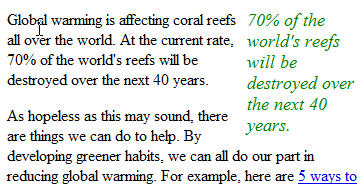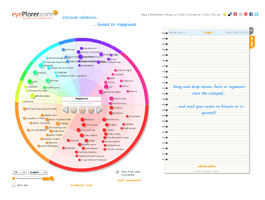One of the most adavanced technologies for the semantic web is HTML microdata. HTML Microdata is a W3C Working Draft (last version : 29 March 2012).
Most HTML tags tell the browser how to display the information included in a tag. For example <h1>Blackberry</h1> tells the browser to display the text string Blackberry in a heading 1 format. However, the HTML tag doesn’t give any information about what that text string means. Blackberry could refer to a mobile device or to a fruit and this makes it difficult for search engines to intelligently display relevant content to a user.
Microdata vocabularies provide the semantics, or meaning of an item. Web developers can design a custom vocabulary or use vocabularies available on the web. Microdata vocabularies are provided by schema.org.
Microdata introduces five simple global attributes (available for any element to use) which give context for machines about your data :
- itemscope – creates the Item and indicates that descendants of this element contain information about it (boolean attribute)
- itemtype – a valid URL of a vocabulary that describes the item and its properties context
- itemid – indicates a unique identifier of the item
- itemprop – indicates that its containing tag holds the value of the specified item property (strings, urls, images, …)
- itemref – properties that are not descendants of the element with the itemscope attribute can be associated with the item using this attribute
Google uses semantic web technologies to create rich snippets (detailed information intended to help users with specific queries) in web search results. Googles suggest to use microdata as a markup format. Actually Google supports rich snippets for the following content types: Reviews, People, Products, Businesses and organizations, Recipes, Events and Music.
Google provides a Rich Snippet Testing Tool to check that their search engines can correctly parse the structured data markup and display it in search results. A Microdata schema creator is provided by Raven.
The next list provide links to more informations about microdata, followed by a list of links to specific vocabularies :
- Microdata: HTML5′s Best-Kept Secret, by Scott Gilbertson
- HTML – living standard, by WHATWG
- Extending HTML5 – Microdata, by Oli Studholme
- Dive Into HTML5 – Microdata, by Mark Pilgrim
- HTML5 Microdata: What is it, and why should you care?, by Marco Kuiper
- HTML5 Microdata and Schema.org, by Jason Ronallo
- HTML Microdata Tutorial, by HTML5.com
- HTML Data Vocabularies, by W3C
- Extending and combining Microdata vocabularies, by Richard Cyganiak
- Good relations – the web vocabulary for e-commerce, by Martin Hepp
- Using Multiple Vocabularies in Microdata, by Jeni Tennison
- Microdata schemas, by HTML5.com


